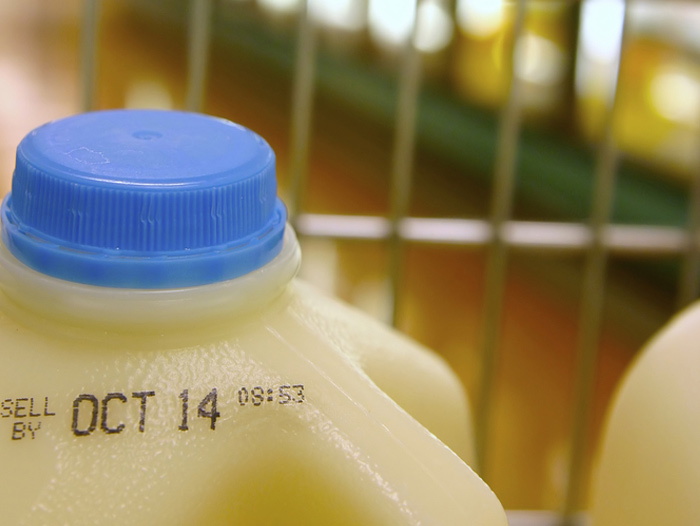IDFA & NMPF Concerned with Consequences of Final WIC Rule Reducing Access to Dairy
April 12, 2024 | 4 min to read
The International Dairy Foods Association and the National Milk Producers Federation expressed disappointment over the final rule updating the WIC program, which cuts dairy allowances despite its nutritional importance for women and children. Leaders highlighted that reducing dairy access contradicts dietary guidelines and may worsen food insecurity. While some provisions, like lactose-free options, were welcomed, the rule's limitations on milk purchasing power could negatively impact many families reliant on WIC for essential nutrients.

WASHINGTON — The International Dairy Foods Association (IDFA) and the National Milk Producers Federation (NMPF) expressed disappointment in the final rule released to update the Special Supplemental Nutrition Program for Women, Infants and Children (WIC), which maintained the proposed rule’s cuts to dairy in the WIC food packages. WIC is a vital program ensuring that pregnant women, new mothers, infants, and children have access to key nutrients that may be lacking in their diets, so decreasing the amount of dairy decreases the nutrients they are accessing through it.
“NMPF is disturbed by the decision to reduce access to the essential nutrients dairy adds to the diet,” said Gregg Doud, NMPF president and CEO. “Nutrition science demonstrates that dairy products like milk, yogurt, and cheese are especially important for women, infants, and children; meanwhile, nearly 90% of Americans don’t meet the number of dairy servings recommended by the 2020-2025 Dietary Guidelines for Americans. This rule works against the WIC Program’s goal of ensuring all Americans have consistent and equitable access to healthy, safe, and affordable foods.”
Milk, cheese, and yogurt are three of the five top redeemed items through WIC. They also provide three of the four nutrients of public health concern identified in the 2020 guidelines.
“At a time of rising food costs, it‘s important to focus on increasing access to a wide variety of healthful, nutrient-dense, and affordable foods, including both fresh produce and dairy products,” Doud said. “It’s disappointing that the final rule limits WIC family purchasing power for nutritious dairy foods.”
While disappointed in the cuts to the dairy allotments in the WIC packages, NMPF and IDFA appreciate the rule’s requirement that states offer lactose-free milk and a wider selection of product package sizes. These changes will help make dairy products more accessible for all WIC participants.
Speaking for IDFA, President and CEO Michael Dykes, D.V.M., said, “This final rule cuts the amount of milk that can be purchased by up to 3 gallons per family per month at a time of high food prices, stubborn inflation, and rising hunger rates, and harms nutrition security by disregarding the Dietary Guidelines’ findings that dairy items in the WIC food package are under-consumed. IDFA has polled WIC participants and 35% say they will need to use non-WIC funds to cover purchases of milk and dairy due to these cuts. Another 33% say the cuts will make their shopping for milk and dairy products harder. Some may decide not to reenroll in WIC because of the cuts. Partners like state WIC agencies, local health clinics, and anti-hunger groups will be forced to explain USDA’s WIC cuts to 6 million low-income mothers and children under the age of five.
“We do, however, recognize and appreciate how the final rule authorizes purchases of lactose-free milk and offers new flexibilities for yogurt and cheese that make it easier for WIC participants to access nutritious dairy foods that meet their family’s dietary needs. For example, IDFA has worked for many years to create flexibility that allows WIC participants to swap a portion of their milk allotment for reasonably sized portions of yogurt (such as 4 oz., 5.3 oz., and 6 oz. cups) totaling up to 32 ounces, rather than one 32-ounce tub. With that change in place, WIC participants will have greater access to nutrient-dense foods that help participants meet the program’s nutrient recommendations. We look forward to the opportunity to collaborate with USDA to encourage states to fully utilize the rule’s provisions that expand options for yogurt and cheese, and to mitigate the cuts to milk benefits,” said Dykes.
The International Dairy Foods Association (IDFA), Washington, D.C., represents the nation’s dairy manufacturing and marketing industry, which supports more than 3.2 million jobs that generate $49 billion in direct wages and $794 billion in overall economic impact. IDFA’s diverse membership ranges from multinational organizations to single-plant companies, from dairy companies and cooperatives to food retailers and suppliers, all on the cutting edge of innovation and sustainable business practices. Together, they represent most of the milk, cheese, ice cream, yogurt and cultured products, and dairy ingredients produced and marketed in the United States and sold throughout the world. Delicious, safe and nutritious, dairy foods offer unparalleled health and consumer benefits to people of all ages.
